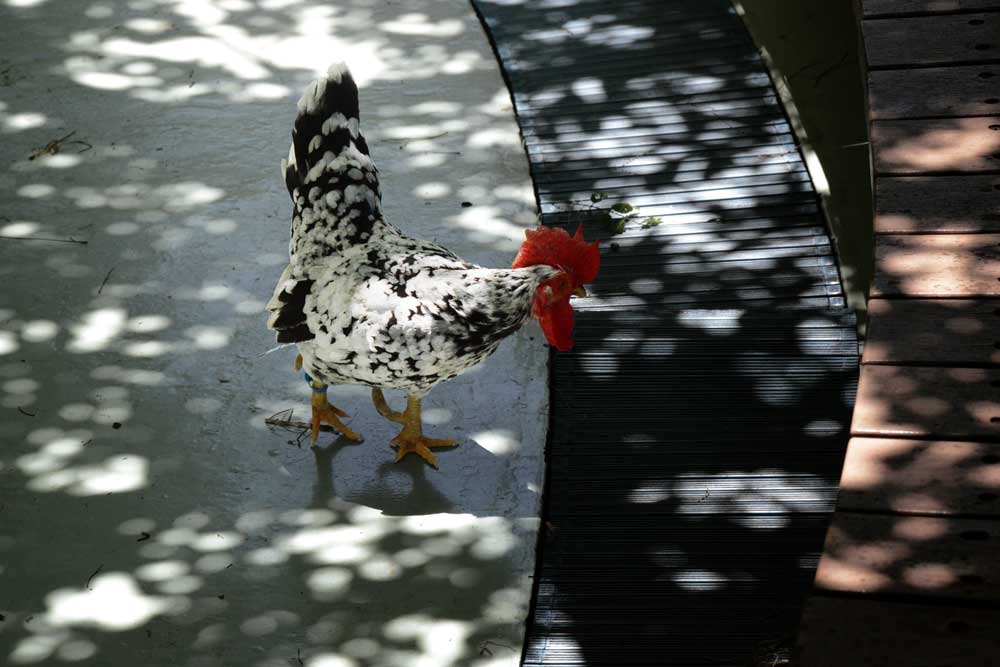
Gallus gallus domesticus
4分の1の確率で孵化しない卵の謎
The Mystery of the 1 in 4 Chance of Eggs Not Hatching
チャボとは日本で改良・作出された鶏の品種で、昭和16年(1941年)に国の天然記念物に指定されています。足が短く、尾羽が直立しているのが特徴です。
チャボの足が短いのは足を長くする遺伝子であるインディアンボッジヘッグ(IHH)遺伝子が壊れていて、切断されたDNAの修復を行うNHEJ1という遺伝子も壊れていることが要因であることが近年の研究でわかりました。また、チャボの卵の四つのうち一つは孵化しないことが古くから知られていましたが、実はこれもNHEJ1遺伝子が壊れていることに起因しています。これらの研究結果はヒトの遺伝性疾患の原因解明や治療法開発につながると期待されています。
日本のチャボ(矮鶏)は江戸時代中期から作出・改良され始め、現在では25種類が認定されています。本種は名前の通り、碁石のような白黒の斑が特徴のチャボ(矮鶏)です。幼体はマダラ模様ではなく、白色又は帯黄白色で頭部に黒点があります。他に碁石の名がつくチャボの品種は薄褐色・白色斑のサクラゴイシ(桜碁石矮鶏)、黒色・褐色・白色の三色裂斑が特徴のミイロゴイシ(三色碁石矮鶏)があります。
The Japanese bantam is a breed of chicken bred and bred in Japan and designated a National Natural Monument in 1941. It is characterized by short legs and upright tail feathers.
Recent research has revealed that bantams’ short legs are due to a disruption of the Indian Boghegg (IHH) gene, which elongates legs, and a disruption of the NHEJ1 gene, which repairs broken DNA. It has long been known that one in four bantam eggs do not hatch, and this is also due to a disruption of the NHEJ1 gene. These research results are expected to lead to the elucidation of the causes and development of treatments for human genetic diseases.
Japanese bantams (dwarf chickens) began to be bred and bred in the mid-Edo period, and currently 25 varieties have been recognized. As its name suggests, this species is a bantam (dwarf chicken) characterized by black and white spots that resemble the stones of “Go”game. Young chickens are not spotted, but are white or yellowish-white with a black spot on their head. Other bantam breeds with the name “go stone” include the Sakuragoishi dwarf chicken, which has light brown and white spots, and the Miirogoishi (Tricolorgoishi) dwarf chicken), which has three-colored spots of black, brown, and white.

参考文献
全日本チャボ保存協会 | 内種一覧 | 碁石矮鶏(ごいしちゃぼ) 2025年8月30日閲覧
野毛山動物園 | なかよしタイムズ | ゴイシチャボの行方 | (2024年11月12日) 2025年8月30日閲覧
公益財団法人えどがわ環境財団 | 自然動物園 | 自然動物園ぶろぐ | ニワトリ紹介 | (2025年4月30日) 2025年8月30日閲覧